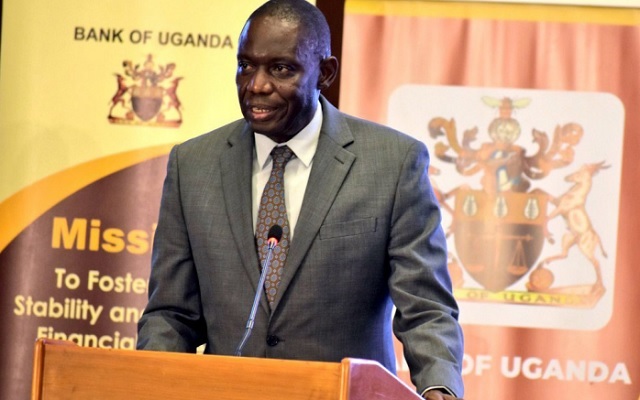
Bank of Uganda chose to keep the Central Bank Rate at 10.25% for the next two months
Kampala, Uganda | THE INDEPENDENT & AGENCIES |The BoU Monetary Policy Committee forecasts a lower inflation rate of between 5 and 5.4% next financial year as the shilling is expected to be more stable.
However, BoU Deputy Governor Michael Atingi-Ego says this is not a given as factors like the Middle East conflicts, adjustments in oil production, and weather among others could influence the inflation trend.
“Uncertainties persist around the inflation outlook, including the potential impacts of an escalation in the ongoing geopolitical tensions in the Middle East, possible energy price hikes, unfavourable weather patterns affecting food supply and production capacity pressures,” he said.
He also cites persistent global inflation and higher interest rates which could affect financial inflows and cause the exchange rate to falter, resulting in higher domestic inflation than currently assumed.
However, there is also a likelihood that inflation will be lower if monetary policy reduces demand more than anticipated or global demand weakens further, resulting in lower imported inflation.
The cost of money at commercial has stagnated between 16.7% and 20.1% for shillings-denominated loans, over the last one year for prime borrowers. Official figures from the regulator show that in May 2023, lending rates at banks averaged 20.1% before falling to 16.7% in December. In April 2024, the average interest rate was 17.7%.
Despite the fear of spiralling inflation, BoU says that this is still very high. Recently, manufacturers were supported by David Bahati, the Minister of State for Industry, that commercial banks should be lending at a maximum of 14%, which is also the average in the region.
President Yoweri Museveni also said something about interest rates during the State of the Nation Address: “I have already directed the Minister of Finance to cap the interest rates chargeable by money lenders. The inflation rate in Uganda is 3%. Why should the commercial banks charge 20% interest? How about the money lenders charging 36% or more?”
CBR kept unchanged
Meanwhile, the Bank of Uganda opted to keep the Central Bank Rate at a high 10.25% for the next two months, following a renewed rise in inflation.
The CBR is an indicative interest rate that the Central Bank uses to influence the cost of money, either upwards or downwards, depending mainly, on the need to regulate the amount of money in circulation.
A high inflation rate leads to high prices for the final consumer of the locally produced goods but also favours borrowers who pay back a lesser value than they borrowed. It may also discourage new investments due to the anticipated low profitability of the business as the value of the local currency falls.
For these and more reasons, the Central Bank maintains the inflation rate with an acceptable target, which for Uganda, is 5%. At the end of May 2024, the Uganda Bureau of Statistics (UBoS) reported that annual headline inflation had risen to 3.6%, having risen to 3.2% a month earlier.
Although this rate is still the lowest in eastern Africa, the Bank of Uganda is not risking to see it go out of hand. The rise in inflation is mainly attributed to rising healthcare, education, and transportation service costs, coupled with higher prices for solid and liquid fuels.
While services inflation rose to a high 6.5%, the most price increases were recorded in electricity, fuel, and utilities from 7.4 at the end of April to 9.5% by the end of May, largely due to high global prices and the depreciation of the shilling early in the month.
 The Independent Uganda: You get the Truth we Pay the Price
The Independent Uganda: You get the Truth we Pay the Price





